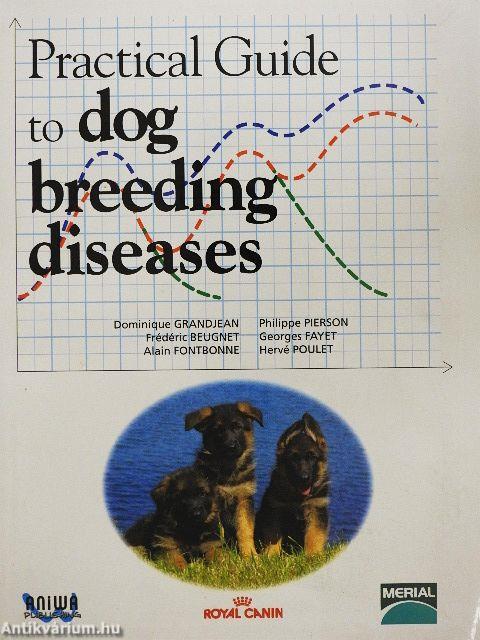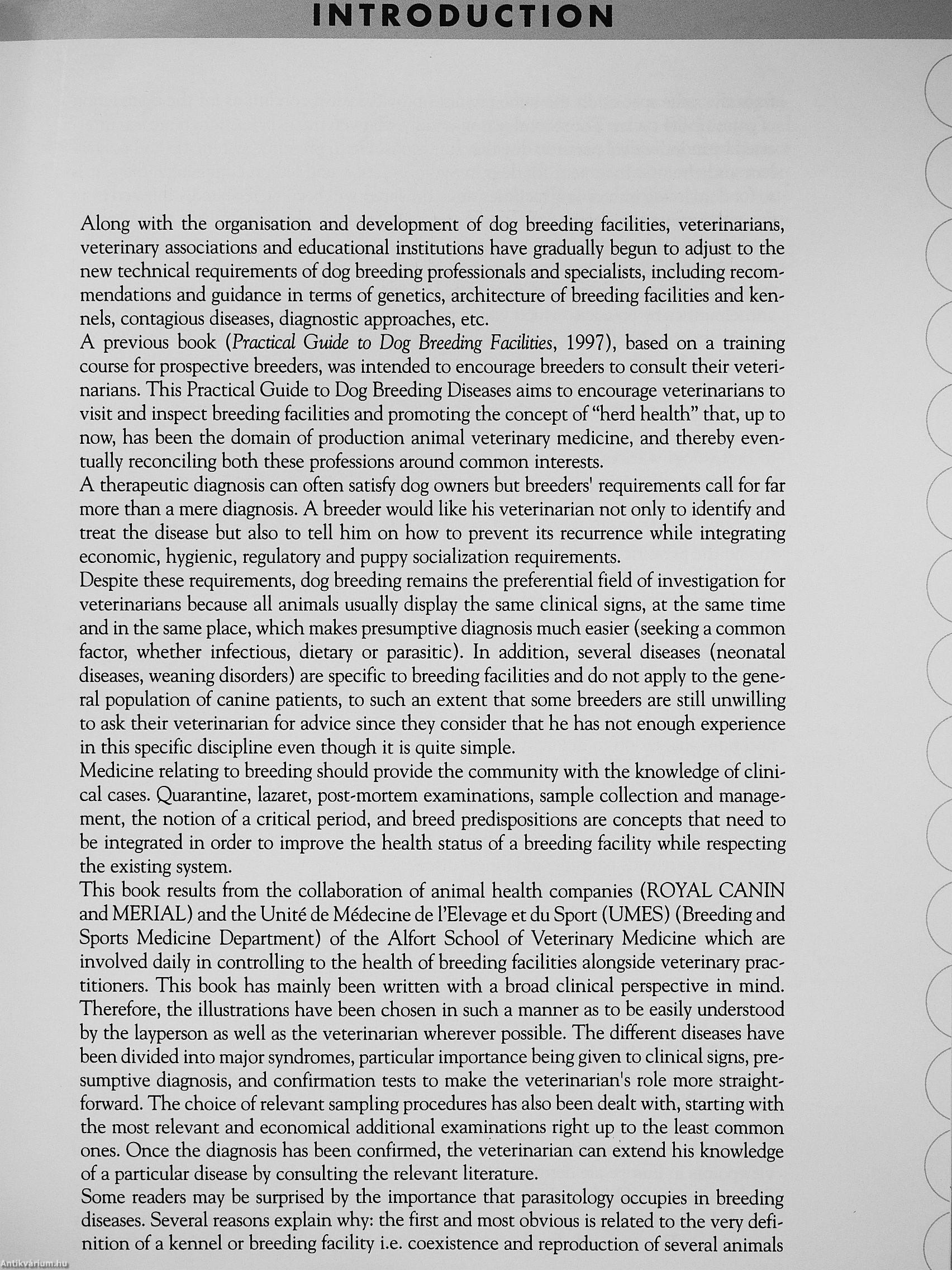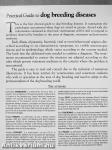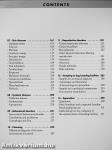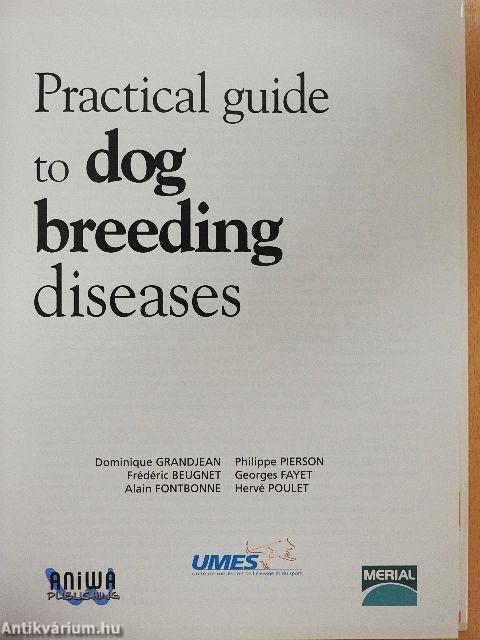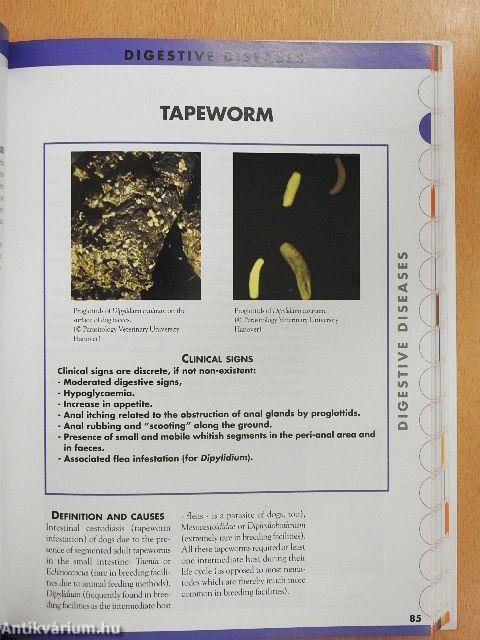1.068.961
kiadvánnyal nyújtjuk Magyarország legnagyobb antikvár könyv-kínálatát

VISSZA
A TETEJÉRE
JAVASLATOKÉszre-
vételek
Practical guide to dog breeding diseases
| Kiadó: | Aniwa Publishing |
|---|---|
| Kiadás helye: | Párizs |
| Kiadás éve: | |
| Kötés típusa: | Fűzött papírkötés |
| Oldalszám: | 333 oldal |
| Sorozatcím: | |
| Kötetszám: | |
| Nyelv: | Angol |
| Méret: | 24 cm x 18 cm |
| ISBN: | |
| Megjegyzés: | Színes fotókkal. |
naponta értesítjük a beérkező friss
kiadványokról
naponta értesítjük a beérkező friss
kiadványokról
Előszó
TovábbFülszöveg
Practical Guide to dog breeding diseases
T
is the first clinical guide to dog breeding diseases. It summarises the pathologies encountered when dogs are raised in groups. Armed with the information contained in this book veterinarians will be able to respond to problems observed by breeders in the areas of diagnosis, treatment and preventive medicine.
Each illness of parasitic, bacterial, viral or even behavioural origin is described according to its characteristic symptoms, its visible macroscopic lesions and its epidemiology, which varies according to the country studied. The book lists the additional tests needed to confirm a diagnosis. The treatments recommended to correct the situation are adapted according to the rules which govern veterinary medicine in the country where the problem is encountered.
The guide is easy to read and consult due to the inclusion of numerous illustrations. It has been written for veterinarians and veterinary students who wish to specialise in... Tovább
Fülszöveg
Practical Guide to dog breeding diseases
T
is the first clinical guide to dog breeding diseases. It summarises the pathologies encountered when dogs are raised in groups. Armed with the information contained in this book veterinarians will be able to respond to problems observed by breeders in the areas of diagnosis, treatment and preventive medicine.
Each illness of parasitic, bacterial, viral or even behavioural origin is described according to its characteristic symptoms, its visible macroscopic lesions and its epidemiology, which varies according to the country studied. The book lists the additional tests needed to confirm a diagnosis. The treatments recommended to correct the situation are adapted according to the rules which govern veterinary medicine in the country where the problem is encountered.
The guide is easy to read and consult due to the inclusion of numerous illustrations. It has been written for veterinarians and veterinary students who wish to specialise in the area of dog breeding and need to adapt to the professionalism of the dog breeding world.
The authors
Dominique GRANDJEAN is a veterinarian, he has a Ph.D. in nutrition, he is a Professor at the Veterinary School in Alfort and he is Director of the Breeding and Sports IVledicine Department (UIVIES). He created this department in 1995, with the collaboration of the Research Centre of Royal Canin. The department develops research, consultation and lecturing activities in the domain of dog breeding and the use of dogs. He is personally involved in the study of search and rescue dogs, which is part of his role as lieutenant-colonel (veterinarian) of the dog teams of the Paris Fire Brigade.
Philippe PIERSON, is a veterinarian, he was a research scientist between 1995 and 1999 in the Breeding and Sports Medicine Department (UMES) of the Veterinary School in Alfort before taking up the position of Director of the Technical Department at Royal Canin. He is in charge of the monitoring of breeding farms in collaboration with the local veterinarians.
Frédéric BEU6NET, is a veterinarian, he has a Ph.D. in parasitology-parasitic diseases and he has passed the parasitology-parasitic diseases 'agrégation' exam. He was a lecturer-research scientist in French Veterinary Schools until 1999, he is now European Technical Director of Mérial. He is particularly interested by helminthiasis in dogs and cats, especially through
epidemiological studies as well as the study of some transmissible illnesses (dirofilarasis) and their vectors (ticks).
Georges FAYET, graduated from the Veterinary School in Toulouse in 1966, he has a diploma from the Medicine Faculty in Toulouse, he was a lecturer at the Veterinary School at Toulouse. He is Assistant Director of Technical Services in Pet Animal Biology, He is the author of several publications describing infectious illnesses in group housed dogs and cats.
Alain FONTBONNE is a veterinarian and lecturer-research scientist at the Veterinary School in Alfort, where he lectures in dog and cat reproduction and breeding. He was an intern at Alfort and helped created the CERREC at the Veterinary School in Lyon. He was the author of a ministerial report on 'health in dog and cat breeding in France'. Since July 2000 he is in charge of the sector specialised in dog and cat breeding in the Breeding and Sports Medicine Department (UMES).
Hervé POULET is a veterinarian. He has a diploma from the Pasteur Institute (immunology) and is an Associate Director He is Project Chief for feline vaccination in Research and Development. He was in charge of the development of the Eurican Herpes 205 (first vaccine against canine herpes) and the Eurifel FeLV (first vaccine against feline leukaemia) vaccines. He runs a virology laboratory and is project chief in Research and Development for Mérial. Vissza



